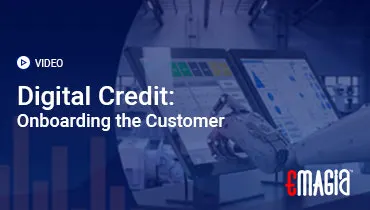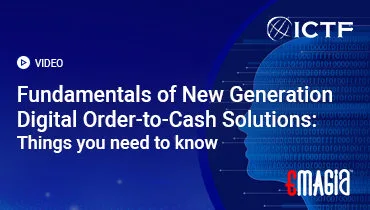Introduction: The Reality of Exceptions in Cash Application Automation
The promise of cash application automation is compelling: faster cash flow, reduced manual effort, and greater accuracy. While automated systems can achieve impressive straight-through processing rates, the reality is that not every payment perfectly matches an open invoice. These deviations are known as cash application exceptions, and they represent a significant challenge that, if not handled efficiently, can undermine the very benefits of automation.
For many finance teams, dealing with unapplied cash, partial payments, and unauthorized deductions remains a major bottleneck. The question then becomes, “How do cash application automation solutions handle exceptions?” It’s a critical inquiry for any business considering or implementing an automated cash application system, as the effectiveness of exception management often defines the overall success of the automation initiative.
This comprehensive guide will explore the sophisticated methods employed by modern cash application automation solutions to identify, manage, and resolve exceptions. We will delve into the technologies and workflows that transform these challenging discrepancies into manageable tasks, ensuring that your financial operations remain seamless and accurate.
Understanding Cash Application Exceptions: The Unavoidable Reality
In an ideal world, every payment would arrive with perfect, detailed remittance advice, allowing for a seamless, automated match. In reality, this is rarely the case. Cash application exceptions are any payments that cannot be automatically matched to their corresponding invoices due to various reasons.
These exceptions represent “dirty data” that requires human intervention or intelligent system assistance. Effectively managing these exceptions is crucial for minimizing unapplied cash and ensuring accurate financial reporting.
Common Types of Cash Application Exceptions:
- Missing or Incomplete Remittance Advice: The payment arrives, but there’s no information (or insufficient information) indicating which invoices it’s for. This is a primary cause of unapplied cash.
- Partial Payments: A customer pays less than the full invoice amount, often due to deductions management issues, short shipments, damaged goods, or pricing discrepancies.
- Overpayments: A customer pays more than the invoice amount, requiring careful handling for refunds or credit memos.
- Matching Errors: Minor discrepancies in invoice numbers, amounts, or customer names that prevent an exact automated match.
- Unidentified Payments: Payments that cannot be linked to any customer or invoice at all.
- Consolidated Payments: A single payment covering multiple invoices from various entities or divisions, often without clear breakdown.
- Unauthorized Deductions: Customers taking a short payment without prior agreement, requiring research and potential dispute resolution.
The Traditional Pain Points of Handling Exceptions Manually
Before advanced automation, handling these cash application exceptions was a significant drain on finance teams. The manual process was characterized by:
- Time-Consuming Research: Analysts spent hours sifting through emails, contacting customers, and cross-referencing internal records to identify the reason for a discrepancy.
- Increased Unapplied Cash: The sheer volume and complexity of exceptions often led to a backlog of unapplied cash, impacting liquidity and financial visibility.
- Higher Operating Costs: More staff were required to manage exceptions, increasing overheads.
- Error Proneness: Manual data entry and reconciliation for exceptions often led to new errors, perpetuating the cycle of rework.
- Delayed Financial Close: Backlogs in exception resolution directly impacted the speed and accuracy of month-end and quarter-end closes.
- Customer Frustration: Incorrect collection calls or delayed resolution of disputes due to unapplied payments damaged customer relationships.
How Do Cash Application Automation Solutions Handle Exceptions? A Multi-faceted Approach
Modern cash application automation solutions are specifically designed to minimize the impact of exceptions and streamline their resolution. They employ a multi-layered approach, combining intelligent identification, automated routing, and robust tools for efficient human intervention. This is the essence of effective exception handling in cash application.
Phase 1: Intelligent Identification and Categorization of Cash Application Exceptions
The first step for an automated cash application system is to accurately identify why a payment didn’t match automatically and categorize it.
- AI/ML for Anomaly Detection: Advanced machine learning cash application models can detect subtle patterns in non-matching payments. They learn from historical data and past human resolutions to recognize common exception types (e.g., specific customer deduction codes, typical partial payment scenarios), even if the remittance is unstructured. This helps in intelligent categorization.
- Rule-Based Pre-Matching and Flagging: Before AI steps in, configurable rulesets are applied to perform initial matching and to flag obvious discrepancies. For example, if a payment is exactly 98% of an invoice, it might be flagged as a potential 2% discount.
- Fuzzy Logic Matching: For minor matching errors (e.g., slight difference in amount, minor typo in invoice number), fuzzy logic algorithms can suggest highly probable matches, reducing the number of true exceptions.
Phase 2: Smart Routing and Workflow Automation for Exception Resolution
Once an exception is identified and categorized, the automation solution orchestrates its efficient resolution. This is where workflow automation becomes critical.
- Automated Workflow for Exception Resolution: The system automatically routes the exception to the correct individual or department responsible for its resolution. For instance, a pricing discrepancy might go to sales, a freight deduction to logistics, and a missing remittance to a collections specialist.
- Customizable Work Queues: Each analyst or team has a personalized work queue displaying only the exceptions relevant to them, prioritized by factors like amount, age, or customer importance. This optimizes analyst productivity in cash application exception handling.
- Pre-populated Exception Details: The system automatically populates the exception record with all available data (payment amount, known invoice numbers, potential reasons), saving analysts significant time on initial research.
Phase 3: Tools for Efficient Research and Resolution
Even with intelligent routing, human intervention is often needed for complex exceptions. Cash application automation solutions provide tools to make this process as efficient as possible.
- Centralized Data Access: Analysts have immediate access to all relevant information in one place, including historical payment data, customer communication logs, invoice details, and previous deduction resolutions.
- Automated Communication: The system can trigger automated emails to customers requesting clarification for missing remittance advice or validating deductions. This reduces manual outreach.
- Deduction Coding and Management: For short payments that are valid deductions, the system allows for quick and accurate coding of deduction reasons. It can then integrate with a dedicated deductions management module for further research or chargebacks, directly supporting dispute resolution.
- Collaboration Tools: Built-in communication features allow AR analysts to easily collaborate with sales, customer service, or other internal teams directly within the platform to resolve complex exceptions.
- One-Click Resolution Options: For common exception types, the system might offer one-click options to apply the payment, write off a small balance, or create a credit memo, accelerating resolution.
Phase 4: Continuous Learning and Improvement (AI in Cash Application)
The most advanced cash application automation solutions don’t just handle exceptions; they learn from them. This continuous feedback loop is powered by AI in cash application.
- Feedback Loop for Machine Learning: Every manual correction or resolution by an AR analyst serves as training data for the AI/ML models. The system learns from these human decisions, gradually improving its ability to automatically identify, categorize, and even suggest resolutions for similar exceptions in the future.
- Performance Analytics: The system provides metrics on exception types, resolution times, and straight-through processing rates. This data helps identify recurring issues and areas for further process optimization, moving towards a truly touchless cash application where possible.
Key Benefits of Automated Exception Handling in Cash Application
The specialized focus of cash application automation solutions on exception handling yields significant advantages:
- Faster Resolution Times: Exceptions are identified, routed, and resolved more quickly, reducing the backlog of unapplied cash.
- Reduced Unapplied Cash: A smaller pool of unapplied cash means greater liquidity and more accurate financial statements.
- Improved Analyst Productivity: AR teams spend less time on tedious research and more time on high-value activities like complex investigations and customer communication. This fosters an intelligent cash application environment.
- Enhanced Auditability and Compliance: All exception handling activities are logged, providing a clear, auditable trail of decisions and actions, simplifying compliance.
- Better Customer Relationships: Prompt resolution of payment discrepancies and deductions leads to fewer disputes and increased customer satisfaction.
- Greater Transparency: A cash application dashboard provides real-time visibility into the status of all exceptions, allowing management to identify bottlenecks and trends.
Emagia’s Intelligent Approach to Managing Cash Application Exceptions
Emagia understands that true cash application automation success hinges on intelligent exception management. Our AI-powered Accounts Receivable (AR) automation platform is specifically engineered to not only achieve high straight-through processing rates but also to master the complexities of cash application exceptions.
Emagia leverages its advanced AI, Machine Learning, and Natural Language Processing capabilities to go beyond traditional rules-based systems:
- AI-Driven Anomaly Detection & Classification: Emagia’s AI proactively identifies payments that are likely to be exceptions based on historical patterns, classifying them precisely (e.g., ‘short payment – potential discount,’ ‘missing remittance’). This speeds up the initial triage of unapplied cash.
- Intelligent Workflow Routing: Our platform automatically routes exceptions to the correct individual or team based on the exception type, customer segment, or amount threshold, ensuring that exception handling in cash application is always efficient.
- Assisted Resolution with AI Suggestions: For exceptions requiring human review, Emagia provides smart suggestions for resolution, drawing from past similar cases and available data. This empowers AR analysts to resolve issues faster and with greater accuracy, especially for complex deductions management.
- Automated Remittance Request & Communication: When missing remittance advice is the cause, Emagia can automatically trigger emails to customers, requesting necessary details, reducing manual outreach for the AR team.
- Integrated Dispute and Deduction Management: Emagia seamlessly connects cash application exceptions to our comprehensive dispute and deductions management modules. This provides an end-to-end process for resolving short payments and other discrepancies, ensuring thorough dispute resolution.
- Continuous AI Learning: Every human interaction and resolution within the Emagia platform feeds the AI, continuously refining its matching capabilities and exception handling logic, driving higher automation rates over time for intelligent cash application.
- Real-time Exception Dashboard: Provides a clear, actionable overview of all outstanding exceptions, their categories, age, and assigned owner, ensuring complete transparency and control.
With Emagia, managing cash application exceptions transforms from a reactive headache into a proactive, intelligent process, allowing your finance team to optimize cash flow and focus on strategic initiatives.
Frequently Asked Questions About Cash Application Exception Handling
What are cash application exceptions?
Cash application exceptions are incoming customer payments that cannot be automatically matched to their corresponding invoices due to reasons like missing remittance advice, partial payments, unidentifiable sources, or deductions. These require manual review or intelligent automation to be resolved.
Why are exceptions common in automated cash application?
Exceptions are common because payment and remittance data are often inconsistent, incomplete, or arrive separately. While automated cash application aims for high match rates, real-world payment complexities (e.g., varying formats, complex deductions, matching errors) mean some payments will always require specific handling beyond simple one-to-one matching.
How does AI help in handling cash application exceptions?
AI in cash application helps by intelligently identifying, categorizing, and even suggesting resolutions for exceptions. AI/ML models learn from historical data and human corrections to recognize patterns in unapplied cash and deductions, automating routing and providing insights to AR analysts for faster, more accurate resolution.
What is automated workflow in exception handling for cash application?
Automated workflow in exception handling for cash application refers to the system’s ability to automatically route unmatched or partially matched payments to the correct individuals or teams based on predefined rules or AI analysis. This ensures that each exception is quickly directed to the right expert for efficient resolution.
How do cash application solutions handle deductions and short payments?
Cash application solutions handle deductions management and short payments by first identifying them, often using AI or rules. They then route these exceptions to specific workflows for research, validation, and dispute resolution. Advanced systems can even automate the coding of common deduction types and integrate with dedicated deduction management modules.
Conclusion: The Imperative of Intelligent Exception Handling for AR Automation
The journey towards true cash application automation is not just about achieving high match rates for straightforward payments; it’s fundamentally about how effectively a solution can manage the inevitable complexities of cash application exceptions. These discrepancies, from unapplied cash to intricate deductions management, are the true test of an automation platform’s intelligence and robustness.
By leveraging advanced AI, sophisticated workflow automation, and intuitive tools for analysts, modern cash application automation solutions transform a significant bottleneck into a streamlined process. This proactive exception handling in cash application not only reduces operational costs and boosts productivity but also ensures that cash flow is optimized, financial records are precise, and customer relationships remain strong. Embracing a solution with intelligent exception management is paramount for any organization committed to maximizing its Accounts Receivable efficiency and achieving full financial visibility.



